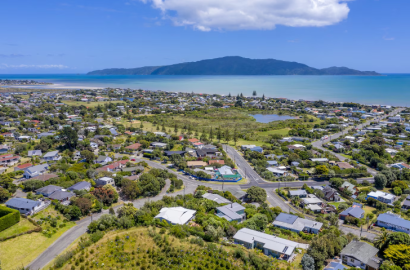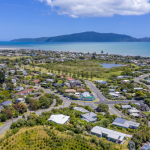As Australia’s National Disability Insurance Scheme (NDIS) continues to evolve, the demand for Specialist Disability Accommodation (SDA) homes is on the rise. These purpose-built homes are designed to meet the specific needs of individuals with significant disabilities, providing them with the opportunity to live independently in a safe, accessible, and supportive environment. In this blog, we’ll explore the factors driving the growing demand for SDA homes in Australia and what this means for the future of disability housing.
What is Specialist Disability Accommodation (SDA)?
Specialist Disability Accommodation (SDA) refers to housing designed for people with extreme functional impairments or very high support needs. These homes are built or modified to meet specific requirements, such as wheelchair accessibility, assistive technology, and in some cases, on-site care. SDA homes range from shared living arrangements to individual apartments and houses, offering a variety of living options depending on the individual’s needs and preferences.
The Rising Demand for SDA Homes
Several factors contribute to the increasing demand for SDA homes across Australia:
- Aging Population of Carers: As the population of primary caregivers ages, there is a growing need for alternative living arrangements for people with disabilities. SDA homes provide a long-term solution for individuals who can no longer rely on family caregivers.
- Increasing Awareness and Access: More people are becoming aware of the benefits and availability of SDA homes. With the NDIS providing funding and support, individuals and families are more empowered to seek out appropriate housing solutions that were previously out of reach.
- Shift Towards Independent Living: There is a cultural shift towards promoting independence and autonomy for people with disabilities. SDA homes enable individuals to live with greater independence while still receiving the necessary support to manage daily activities.
- Improved Quality of Life: SDA homes are designed with the specific needs of residents in mind, offering an enhanced quality of life through accessibility features, modern amenities, and proximity to community services. This makes them an attractive option for those seeking a comfortable and supportive living environment.
- Increased NDIS Participation: As more individuals join the NDIS, the demand for specialized accommodations grows. With an expanding number of participants eligible for SDA funding, the need for suitable housing is more pressing than ever.
Challenges in Meeting SDA Demand
While the demand for SDA homes is growing, meeting this demand presents several challenges:
- Limited Supply: The supply of SDA homes is currently limited, with a significant gap between the number of homes available and the number of people eligible for SDA funding. This has led to long waiting lists and a competitive housing market.
- High Development Costs: Building SDA-compliant homes involves significant costs due to the need for specialized design, materials, and construction standards. This can deter potential developers and slow the rate at which new SDA homes are built.
- Geographical Disparities: While some urban areas may have a relatively higher supply of SDA homes, regional and remote areas often face a shortage. This geographical disparity makes it challenging for individuals in less populated areas to find suitable accommodation.
- Complex Funding Processes: Navigating the funding process for SDA can be complex, with strict eligibility criteria and lengthy approval times. This can delay access to housing for those who need it most.
The Future of SDA Housing in Australia
Despite these challenges, the future of SDA housing in Australia is promising. The NDIS is committed to increasing the availability of SDA homes through various initiatives, including:
- Incentivizing Development: The NDIS offers incentives for developers to build SDA homes, including funding mechanisms and streamlined approval processes. This is encouraging more investment in the SDA market.
- Innovative Housing Solutions: There is growing interest in innovative housing models, such as modular homes, co-housing, and mixed-use developments, which can provide flexible and scalable solutions to meet the demand for SDA.
- Focus on Regional Areas: Efforts are being made to address the geographical disparities in SDA housing by incentivizing development in regional and remote areas, ensuring that all Australians have access to appropriate housing.
- Enhanced Participant Choice: The NDIS is working to ensure that participants have greater choice and control over their housing options, allowing them to select homes that best meet their needs and preferences.
Conclusion
The demand for NDIS SDA homes in Australia is on the rise, driven by a combination of demographic shifts, increasing awareness, and a growing emphasis on independent living. While challenges remain in meeting this demand, ongoing efforts by the NDIS, developers, and the community are paving the way for a more inclusive and accessible housing market.
As the NDIS continues to expand and evolve, the future of SDA housing looks bright, with more Australians set to benefit from these purpose-built homes designed to enhance quality of life and promote independence. For those navigating the SDA housing market, staying informed and engaged with the latest developments will be key to finding the right home to meet their needs.
Are You Looking for an SDA Home?
If you or someone you know is in need of an SDA home, start by discussing your needs with an NDIS planner or Support Coordinator. They can guide you through the process and help you explore your housing options.


 NDIS SDA Building Companies in Australia: Leading the Way in Specialist Disability Accommodation
NDIS SDA Building Companies in Australia: Leading the Way in Specialist Disability Accommodation
 NDIS Government Updates: What You Need to Know
NDIS Government Updates: What You Need to Know
 Understanding the Growing Demand for NDIS SDA Homes in Australia
Understanding the Growing Demand for NDIS SDA Homes in Australia
 Navigating NDIS Housing Vacancies in Australia: Your Comprehensive Guide
Navigating NDIS Housing Vacancies in Australia: Your Comprehensive Guide
 NDIS Supports consultation opens
NDIS Supports consultation opens